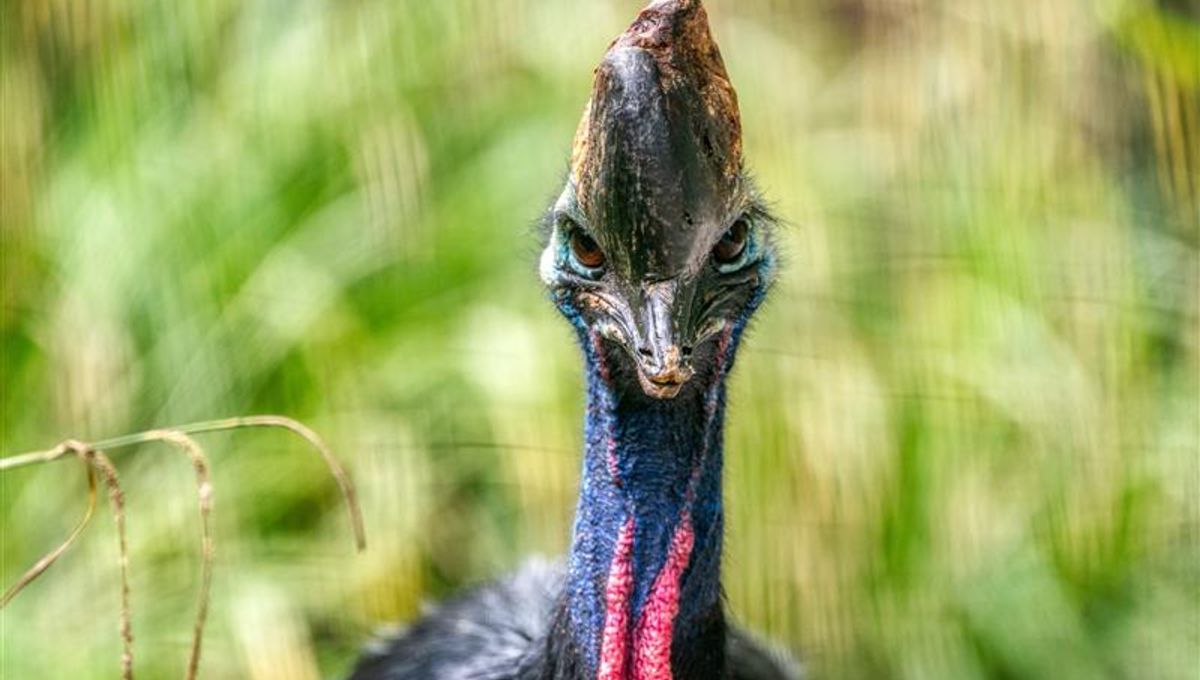
We all (hopefully) know it’s not a good idea to go near crocodiles, scorpions, venomous snakes, and the like, but perhaps it’s time we started adding some feathered friends to that list. Swooping magpies are certainly a contender and we’ve even been to war with emus – but which is the most dangerous bird of all?
If we’re talking about the bird most often referred to as the “world’s most dangerous”, then look no further than the southern cassowary (Casuarius casuarius). Standing up to 2 meters (6.6 feet tall) and with adult females weighing in at a whopping 76 kilograms (168 pounds), this bird makes for an unsettling figure before you even consider the rest of its appearance.
Granted, it has lovely shiny feathers and a ridiculous tall, brown helmet atop its head – but that’s where the amusements end. The cassowary has also been dubbed a “living dinosaur” and if you take a look at its feet, you’ll soon see one of the big reasons why: its large, razor-sharp claws.
But if we equate “dangerous” with the likelihood that you’ll meet your bloody end at the hands of those claws, then in most contexts, you don’t necessarily have that much to fear.
Cassowaries can and have killed people – a Florida man’s pet cassowary did so back in 2019 (we’d recommend getting a parrot or something instead). In their native Australia, however, you’re more likely to be killed by a cow than a “murderbird”. In fact, the last time someone in the country was reported as being killed by a wild cassowary was nearly 100 years ago, when a blood vessel in 16-year-old Queensland resident Phillip McClean’s neck was severed by its claws.
This doesn’t mean we suggest that you go near one – attacks might be rare, but get on the wrong side of a cassowary and it’ll still fuck you up. “On the wrong side” usually means it’s expecting you to have brought it food, or that you’re too close to it, its eggs, or its chicks.
In other words, if you want to avoid cassowary-inflicted injury, stay well away from them, or be cass-o-wary as the Queensland Government puts it.
There’s another good reason to stay away from them too – cassowaries are now considered to be an endangered species by the Australian government, with only around 4,000 adults estimated to remain in the wild. Encountering humans on a regular basis runs the risk of them getting used to us, which can endanger them (and humans) even further.
So, if the cassowary’s claim to the title of “most dangerous bird” is in doubt, what’s the next best contender?
That accolade may just belong to one of its relatives, the common ostrich (Struthio camelus); it’s been reported that an estimated two to three people are seriously injured or killed each year by ostriches in South Africa. They very nearly killed country music too, after Johnny Cash allegedly got in a fight with one and wound up with part of his belly ripped open.
Those pesky ratites.
Source Link: What Is The Most Dangerous Bird?